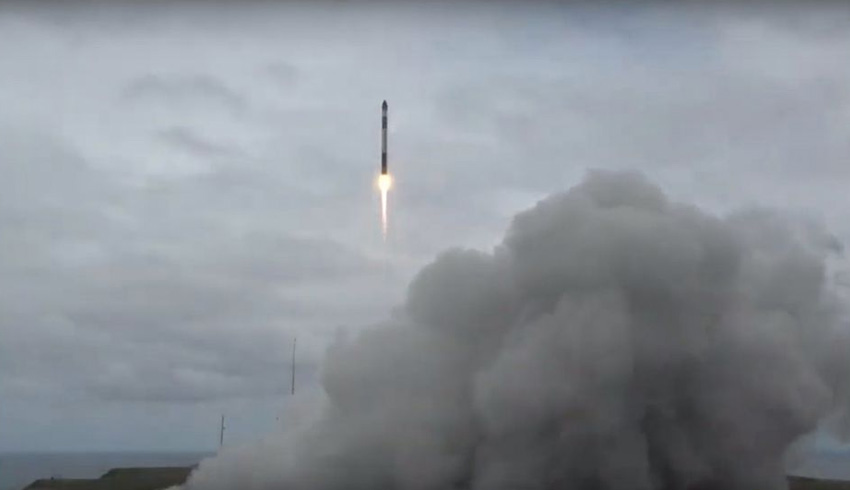
This was Rocket Lab’s seventh launch of an Electron rocket and the third this year. Just under an hour after launch from the facility on the Mahia Peninsula on New Zealand’s north island on Saturday afternoon, the Electron launch vehicle kick stage successfully deployed the seven satellites of the Make It Rain mission to their designated orbits.
Among the satellites on board were BlackSky Global-3, two US Special Operations Command (SOCOM) Prometheus, and Melbourne Space Program's ACRUX-1.
This mission took the total number of satellites deployed by Rocket Lab to 35, maintaining the company's record of 100 per cent mission success.
"Congratulations to the dedicated teams behind the payloads on this mission, and also to our team for another flawless Electron launch," said Rocket Lab founder and chief executive Peter Beck.
"It's a privilege to provide tailored and reliable access to space for small satellites like these, giving each one a smooth ride to orbit and precise deployment, even in a rideshare arrangement."
This rideshare mission was organised by Seattle, US, company Spaceflight, a satellite broker that books small satellite launches with launch providers such as Rocket Lab.
The mission name Make It Rain reflected the weather in New Zealand and Spaceflight’s home in Seattle. Aboard was the ACRUX-1 CubeSat built by engineering students from University of Melbourne’s Melbourne Space Program. It’s named after the brightest star in the Southern Cross.
ACRUX-1’s distant ancestor was Australis OSCAR 5, Australia’s first amateur satellite and first amateur satellite designed and assembled outside the US.
That too was built by Melbourne University students and launched from the US in 1970 aboard a Thor rocket.
The Melbourne Space program didn’t have big ambitions for ACRUX-1. It said it would regard this mission as a complete success if it received a signal from the satellite in orbit.
It’s working just fine.
“Following a successful launch on 29/06/2019, ACRUX-1 is now diligently sending us signals from low-Earth orbit,” the group said on its website.
ACRUX-1’s beacon transmits every 10 seconds and anyone with the technology and the inclination can listen in. The frequency is 437.2 MHz with modulation and packet format of GMSK 9600 bps 12.5 kHz AX.25.
The group said that as well as building a satellite, successfully securing an international launch and the related licences were significant accomplishments in themselves.
“Our volunteers, who are university students from diverse backgrounds and disciplines, have gained unparalleled experience from ACRUX-1 – a CubeSat project that is the first of its kind in many respects for Australia. This experience is an invaluable asset that will better prepare them for real jobs in the future,” it said.
ACRUX-1 won’t be active indefinitely. Because of mass and volume constraints, it was built without shielding of its electronics and radiation damage will occur over time. The team said even operating for a few weeks would constitute success.
The largest individual payload on board was the 56-kilogram BlackSky Global 3 Earth-imaging satellite, which joins two other BlackSky satellites launched in 2018.
Also on board were two Prometheus CubeSats launched for US Special Operations Command, the latest in a series designed to test low-cost, easy-to-use communications technologies, including audio, video and data, for use by deployed special operations forces.
Receive the latest developments and updates on Australia’s space industry direct to your inbox. Subscribe today to Space Connect here.









